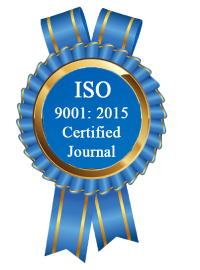| All | Since 2020 | |
| Citation | 172 | 110 |
| h-index | 7 | 5 |
| i10-index | 1 | 0 |
WJERT Citation 
Login
News & Updation
Abstract
THE POTENCY OF PHENOLIC COMPOUNDS IN ENHANCING THE PHYSICOCHEMICAL PROPERTIES OF GELATIN FILMS: A REVIEW
Notabo Hlabano*, Londiwe C. Nkiwane, Pethile Dzingai, Lloyd Njoka Ndlovu and Sithabisiwe Gadlula
ABSTRACT
The growing demand for sustainable, biodegradable, and high-performance biomaterials has led to extensive research on natural polymers such as gelatin. Gelatin, a protein-based biopolymer derived from collagen, possesses excellent film-forming abilities, making it a promising material for applications in food packaging, biomedical engineering, and pharmaceuticals. However, its practical applications are often hindered by poor mechanical strength, high water solubility, and low thermal stability, which limit its durability and functionality in diverse environments. Different chemical crosslinking strategies have been widely explored to enhance the structural and physicochemical properties of gelatin-based films. Among various crosslinking agents,phenolic compounds have gained significant attention due to their natural origin, biocompatibility, and multifunctionality. Phenols, such as tannic acid, catechol, ferulic acid, and gallic acid, interact with gelatin through covalent and non-covalent bonding mechanisms, leading to enhanced mechanical strength, reduced water sensitivity, and improved antimicrobial properties. Thus, this review provides a comprehensive analysis of the modifications induced by phenol crosslinking in gelatin-based films. Specifically, it examines the structural alterations resulting from crosslink formation and the physicochemical changes that contribute to their stability and durability. Additionally, these modifications improve antimicrobial properties, making the films suitable for food packaging and biomedical applications. Despite these improvements, challenges remain in optimising crosslinking efficiency, maintaining film flexibility. Future research should therefore focus on improving the balance between flexibility and mechanical strength. By addressing these challenges, phenol crosslinked gelatin films can become more viable alternatives to synthetic polymers, contributing to the advancement of sustainable materials in the biomedical and packaging industries.
[Full Text Article] [Download Certificate]
